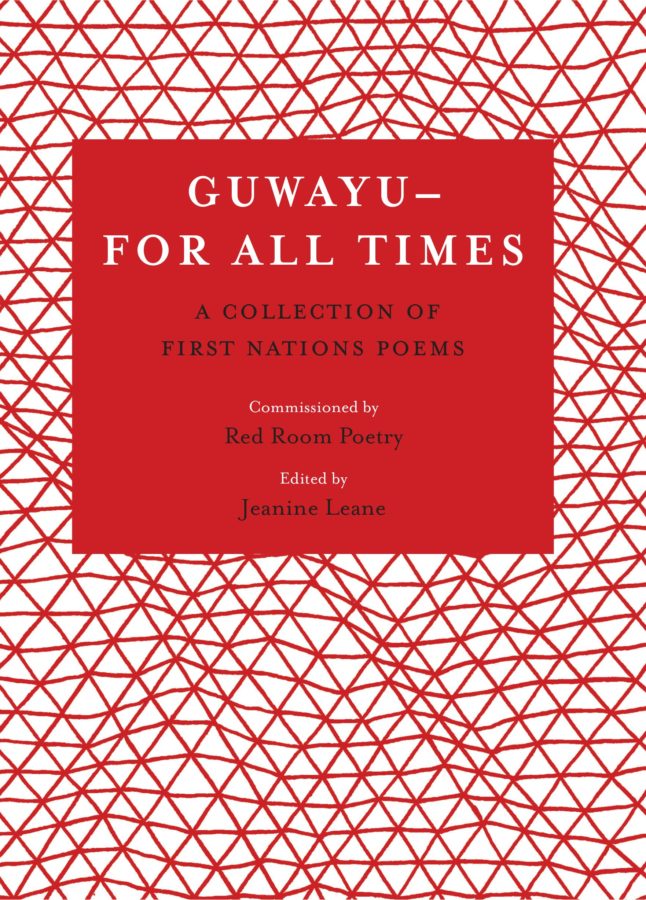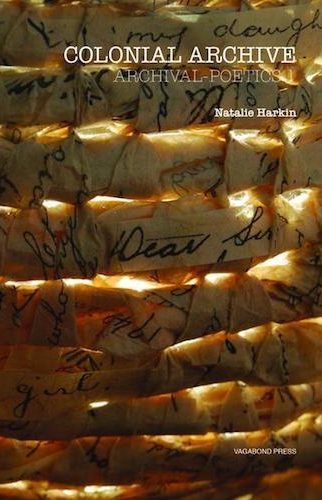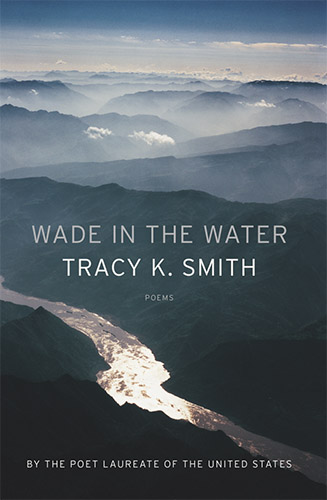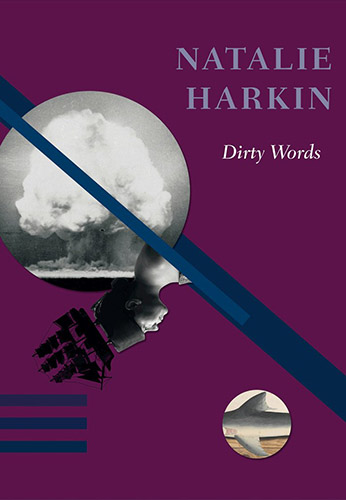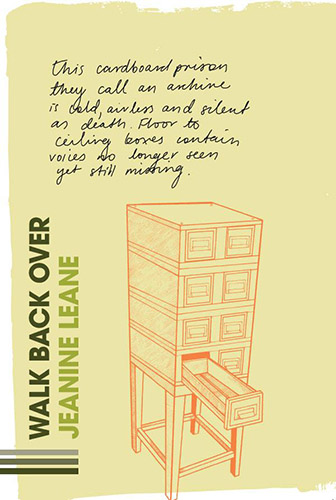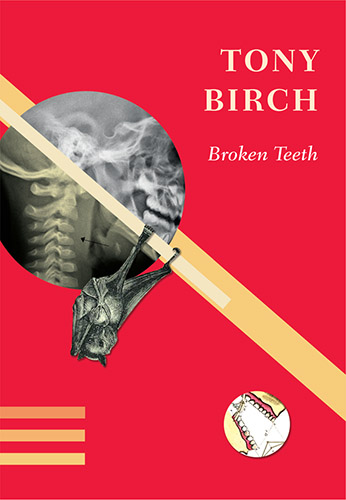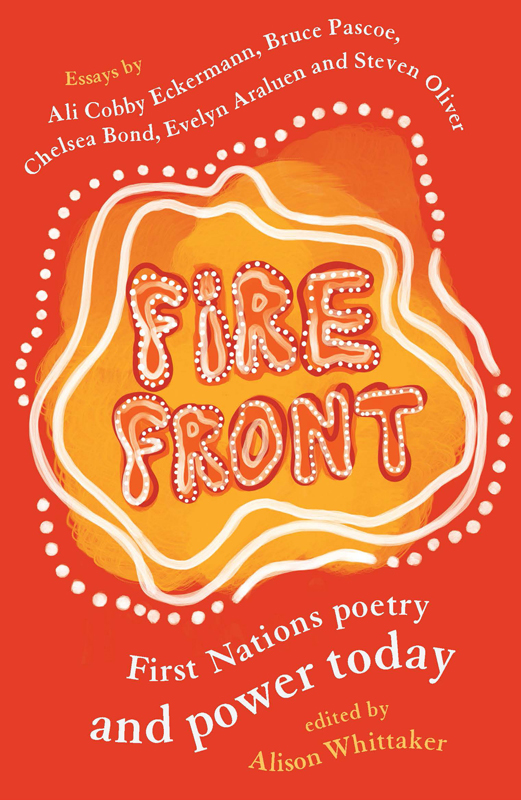Beyond your stage
– Evelyn Araluen, ‘KI_ Yellowmundee’
the audience murmurs
men and women weep
and silk their skin bare,
for here and gone and taken.
Guwayu – For All Times is a poetry collection carefully woven by Wiradjuri writer and academic Dr Jeanine Leane. It evolved from a series of commissioning projects undertaken by Red Room Poetry over the course of sixteen years. Guwayu, a Wiradjuri word that that can be interpreted as all times are inseparable, captures the fluidity of the work, a collection that refuses to be fixed or tied down. Leane’s weaving symbolic of other Blak anthologies reverses the white gaze by following community-controlled editorial protocols. In her foreword she describes it as
… a collection written for and by First Nations from the many communities that form the modern nation of Australia. Much Aboriginal writing in Australia is still subject to imported, introduced and sometimes invasive northern hemisphere, western literary practices.
Borders and boundaries are broken through weaving rather than conventional modes of editing. This avoids retrofitting poems to meet certain standards in the hope that they may find success with mainstream audiences. She writes:
Aboriginal Peoples have woven here since time immemorial. Different fibres and materials are used in different regions. Women and men both wove and crafted nets for fishing and hunting and baskets for carrying and gathering.
These cultural practices suffuse Leane’s editorial voice; weaving creates a body of poetry reflective of the many fibres and materials which nourished country and contributed to the ongoing survival of First Nations people. Loosely tied into parts –Extinction Elegies, New Shoots, Poetic Moments, Poetry Object, The Disappearing, Rhyming the Dead, Unlocked and Poetry in First Languages – a broad group of poets both established and emerging are brought together to create a larger vessel by joining the intricate threads of their work.
The collection arrives alongside other Blak poetry anthologies published this year, Fire Front: First Nations Poetry and Power today edited by Alison Whittaker and Homeland Calling: Words from a New Generation of Aboriginal and Torres Strait Islander Voices edited by Ellen van Neerven. They follow Blak writing collectives such as the First Nations Australian Writers Network (FNAWN), UsMob Writing, an ACT-based group of First Nations Australian peoples and other preceding collections such as Black Woman Black Life (Wakefield Press, 1996); Talkin’ About Country (Kuracca, 1997) and Message Stick: Contemporary Aboriginal writing (IAD Press, 1997) edited by the late Aunty Kerry Reed-Gilbert. These practices disrupt literary gatekeeping by ensuring that mob nurture and weave our own work, as Evelyn Araluen and Alison Whittaker discussed at a recent Wheeler Centre event celebrating Fire Front: ‘There’s a rich history of Blak writing in anthologies creating collective bodies of text that bring our words together in such a communal and geological way’, noted Araluen. Whittaker agreed. ‘There’s nothing that attempts to force it into categories or ways of reading and that is really important,’ she said.
Blak anthologies unsettle Australian literary whiteness, which has often marginalised, and categorised First Nations work through stereotypes, assuming it falls into narratives of protest or disadvantage. Guwayu pushes against this, creating what Leane terms ‘a radical intervention in Aboriginal publishing for its breadth of representation, diversity of language, and drafting and editing protocols’. And while a groundswell of Blak anthologies are emerging, there’s a continued need to push Blak practice further, evident in the uneven way this work is often perceived by the industry. A recent review of Fire Front by Geoff Page in the Canberra Times, for example, appeared positive but was laced with irritating condescension. Settler critics have a limited reading position and when they read First Nations poetry through they lens of protest and activism, they are unable to connect with the craft and diversity within. Page writes of Fire Front that ‘inevitably, most of the poetry is “political”’ and finishes by describing how:
Overall levels of artistry displayed tend to be below the technical accomplishment seen so clearly in the work of Aboriginal actors such as Aaron Pedersen, Leah Purcell and Deborah Mailman, or Aboriginal filmmakers such as Rachel Perkins, Ivan Sen and Warwick Thornton.
Conflating Blak poetry with protest or ‘political’ movements implies that we are a continually ‘disadvantaged’ race, incapable of writing beyond social justice. Comparing this work to other storytelling mediums such as film and acting reflects how white Australia is often unable to distinguish or understand the wide-ranging cultural contributions that Aboriginal and Torres Strait Islander people make. Instead Blak culture is understood as being all the same, and stereotypes stick, resulting in a frustrating and limited view of our diverse work. Weaving opens audiences to new ways of seeing our work, which may begin to shift how non-Indigenous people approach it. We are given a thread of poems gently tied together, providing the reader with a lively and contemporary net covering a spectrum of experiences.
In the collection’s opening we experience different tones from the darkly humorous ‘Happy Wagga’ by John ‘Muk Muk’ Burke, the sweeping momentum of Araluen’s ‘KI: Yellowmundee’ and Matthew Heffernan’s subdued grief in ‘The Small Chest of Sand’. Pace and emotions shift but a collective mood begins to take shape which reveals communal strength. Burke is deeply critical of shallow reconciliation and capitalism, proclaiming:
lower and higher learning
Flush with cash?
Not into public trash?
Why not
Privatise the kids?
His biting attack on Australia gives way to loneliness in Araluen’s ‘KI: Yellowmundee’, which defies the clichés to which white Australia often views loss:
Held by mostly mountains now
you wear crowns
of returning eucalypt:
I can’t see your lashes
but feel them still soft
Loss continues in the ‘The Small Chest of Sand’, where memories carry trauma but also generate healing.
The genesis of a memory, for moments worth stealing,
this essence that blankets is my psalm while I’m kneeling,
‘thank you’, the only words for the person it’s revealing,
my manifested mantra, I have found my healing.
As the collection weaves on, poems like Nicole Smede’s ‘Pre Dawn’ show strength and optimism, illustrating how the tightly connected fabrics of our culture are heavily indebted to matriarchies. She writes:
Leaving sleeping babes
mouths open, warm chests filled
with the breath of dreams
A matriarchal journey unfolds as the narrator cares for country and family, reflective of a thriving culture:
Returning to camp
mother, grandmother, child.Kookaburra calls
Dawn nears
Generations are fortified by maternal knowledge and bloodlines flourish in connection to country, defying images of disadvantage replete in news cycles. Through weaving we are shown resilience, humour, bereavement and power – all of which speak back to clichéd assumptions of what Blak writing is.
The structure of the anthology is another important way Guwayu subverts mainstream expectations. The anthology becomes a vessel to both collectivise and reclaim the archive or documentation of First Nations people in academia, museums, anthropology and literature. A tool of settler colonialism, in Guwayu it becomes a living record of our stories. As Leane writes:
feel the texture of the sublime vessels woven within this living, breathing archive of us crafted from the living literature of our words.
Blak archival poetry has been used to critique colonial practices with immense power. Narungga poet Natalie Harkin’s 2019 prize-winning collection Archival Poetics interrogates South Australian government documents including records pertaining to her own grand mother. In Part 1 Colonial Archive she writes:
I tear out their words their words from these records
This shredding of words I tear out for you.
Through weaving Harkin dissects the records, policies, laws and government institutions which oppressed and imposed a colonial narrative on her family. She retells that narrative through the records she has obtained and in doing so, reasserts voice and power. As she writes to her nana at the archives’ end, she ‘reveals something profound on family-storm survival.’
While the poems weaved through Guwayu do not directly engage with records they become a counter-archive by collecting the lived experiences of First Nations people, through community-controlled methods. As a race that has been studied and contained for settler narratives and objectives, Guwayu allows Blak poets to thread their own memories in an archival structure which remains active and evolving. No longer a bureaucratic problem to be documented then fixed, diverse cultural perspectives weave a celebratory fabric, which reaffirms strength and survival.
In poems like Lorna Munro’s ‘Dripping with Decadence (big house, big white lies)’ government power is derailed, exposing the hidden realities of the colonial archive. She proclaims:
Big house, big lies, gubbna, white gubbament
Contorted melaleuca
Conveniently furnished with second-hand decadence
Will society ever speak of the secret deals that were made?
In order to showcase marble reminiscent of all the blood that
was laid
Similarly, the Australian Government’s colonial amnesia codified in policy and law is forcefully conveyed in ‘The abyss of an apology in Australia’ by Ali Cobby Eckermann:
there is little reparation for food
there is no apology for the past
there is no apology for the past
There is no apology for the past despite the cycle of bureaucratic archives and documentation, which attempt to fix a ‘problem’ of their own creation.
If Guwayu is an archival vessel which redistributes power, the use of First Nation languages and Aboriginal English throughout is a tactic to reassert identity in the Australian literary landscape. Leane writes that ‘the diversity of First Nations languages represented in this collection is to date unprecedented in Australian Indigenous Publishing – yet long overdue.’ This significant shift arrives at a time when government policy, university reconciliation plans and corporate diversity agendas seem equally driven to include Indigenous languages. But the recent proliferation of Aboriginal languages by institutions feels ethically unsound, mimicking the colonial archives. If our languages are in a nascent state of revival, which requires care and community connectedness, their use in other contexts can feel presentational, a means for white institutions to align with Blak culture in a charade of progress which can mask the continued racism within.
I often recoil at the ease with which mainstream organisations emblaze corporate documents in Blak language as if it removes their compliance with Australia’s past. Diversity strategies are posted on LinkedIn declaring support for self-determination as if it’s as effortless as a heading written in Woi Wurrung, ignoring the radical shift in power that is actually needed. There is value in seeing First Nations languages in corporate publications – but if the core content does not empower First Nations communities the words remain tokenistic. They also erase the layers of a culture founded in more than 350 language groups. Quick linguistic statements suggest that First Nations languages easily mould into English, which fails to understand the diversity, aural quality and dynamism of First Nation tongues. Guwayu responds to western temptations to translate English into to Native languages when it seems advantageous. It acknowledges that translation may not be appropriate or even possible. As Leane writes in her foreword:
The use of the term ‘interpretation’ rather than translation is a conscious choice and one recommended by participating Elders and Custodians. The term speaks more faithfully to the complexity of each of our languages that are unique and refuse direct classification and translation into the coloniser’s introduced language of English.
Interpretation becomes a valuable pathway into the process of language repatriation, which critiques western systems and assumptions around translation. It also reflects the personal journeys individual poets experience as they reconnected with their ancestral tongue. ‘Ngurrparringu (Forgotten)’ by Matthew Heffernan with Pintupi-Luritja interpretation by Lavinia Heffernan underscores the disorientation of both remembering and forgetting and understanding that this isn’t our fault. He writes:
Sadly, I don’t hear the wind of my grandfathers clearly anymore. I live in a different people’s land. I have forgotten
His resolve stands alongside Pintupi-Luritja language, which avoids obvious translation. Words and sounds create their own patterns and meanings, which would seem reductive and strange to fit into English but stand alone in confidence:
Tjinguru irrititja tjilpi tjuta ngayunywanpa ngurrangka
nyinangu?
These intricacies are also expressed in poems, which remain in English but address the forgetting that Heffernan speaks of. In Declan Furber Gillick’s ‘Bigger Than School Stuff’ language loss is experienced from the perspective of school children. It attests to younger generations grieving as educational and career opportunities come with the cost of leaving country. An author’s note introduces the poem, foregrounding his uncertainty:
I’m still not 100% sure if this is the proper way to publish this. It is not really a poem. It is a piece of oral history. And right now it is incomplete.
A young child’s realisation that they are losing language then follows:
Tyrone, all our families used to speak
that language here
And then slowly people stopped
They lost it
We bear witness to a trauma familiar to colonised peoples, but as the author acknowledges it’s difficult to know whether this is the correct vehicle to share it, it’s not yet complete. He goes further to expose the cost of opportunity and mobility:
Sometimes I feel ashamed that I don’t know more, that I don’t ‘do more’. I suspect that a lot of blackfellas who live between worlds like me feel this way sometimes. It’s lonely and it can be hard to talk about.
His sentiments reveal a complex duality that doesn’t fit neatly into settler binaries. And, as Leane outlines, it ‘refuses the colonial voyeuristic obsession with tragedy and trauma as the ultimate and only contribution of Aboriginal writing to Australian literary studies.’ Voyeurism is denied through an admittance to the multi-layered place from which he writes. A place that can be as rewarding as it is tiring, navigating cultural responsibility with new opportunities. Like other poems within the collection it refuses to perform pain for the white gaze, primarily because there is also joy. Pain may exist but it is reduced by the clarity and self-awareness of the continued learning, which also occurs.
These ambiguities are carried through the following poem ‘Arms of a friend’ by Carissa Lee. Corresponding themes of loss and disconnection are implied but not as a white audience may expect. She writes:
How many times have you wished to pick up forgotten
things?
Wished to fly, like the winged friends who come visit.
Perhaps a lovely stretch or rest would be well earned by this
stage,
for it’s only natural that forever reaching could make one
grow weary.
The freedom of travel and discovery are evoked but it tires easily:
Perhaps instead of dreaming of lands from before, you long for flight, or reaching unreachable things.
We keep moving, searching for the new but it is tied to a longing for home that we are also aware could be ‘unreachable.’
In Samuel Wagon Watson’s ‘Wiped’, searching, forgetting and remembering are connected. He writes:
I reply your voice with every word borrowed from the
dictionary
again, and again, as it hits a page, embedded. And as the
words get harder your voice gets weaker in memory and I
fear if
I keep writing well…You know what will happen?
He knows what is lost when we write in English just as he conveys an understanding of what can be regained and re-taught. Traditional languages faded but culture was salvaged by First Nations peoples’ use and adaptation of the imposed language. As Leane writes:
The decision to craft their works in Aboriginal English rather than Standard Australian English is a conscious and deliberate choice. It is also a testimony to our ability to make the introduced language our own and to make it work for our many communities, and is further evidence of the innovation and resilience of our First Nations peoples post invasion. Such innovations are transforming the English language and Australian literary studies.
English from the dictionary – on our own terms, with our own inflection – is ironically lost amid the eagerness of public institutions to include Indigenous languages. The innovation which Leane speaks of is diluted by polices and strategies which incorporate First Nations language in the form of catchy headings but disregard knowledge within the body of the text. Leane’s editorial weaving, encouraging adaptive use, is crucial given that many First Nations people continue to be disciplined within mainstream institutions despite a growing interest in our languages and cultural practices. In her recent monograph Unmasking the Racial Contract: Indigenous Voices on Racism in the Australian Public Service Kamilaroi and Wonnarua academic Debbie Barrgallie examines how systemic racism often relates to English language use. One of the key instruments of disempowerment experienced by Aboriginal and Torres Strait Islanders staff is the reinforcement that their writing skills are not sufficient to succeed. She writes:
The view is that we lack writing skills. No matter how close we are to the ‘right’ knowledge and standards, we are not guaranteed acceptance or recognition, but just made more aware of how ‘wrong’ we are.
The immense talent First Nations people possess as storytellers easily contradicts this, and is affirmed by recent Miles Franklin award-wining writers Tara June Winch and Melissa Lucashenko, among so many others. But deep in the bureaucracy there is often little room to play with language, far less an acceptance of Aboriginal English, despite the proliferation of public-facing documents which use Blak languages to suggest progressiveness.
In this context Guwayu becomes an important resource to both educate and argue for a nuanced understanding of language repatriation and acceptance of Aboriginal English in institutions eager to appear inclusive despite a continued misunderstanding of our identities and culture. The marketing of Indigenous languages to service white authority and audiences is critically addressed through Leane’s weaving. Guwayu achives this by building from archival poets who critique government records, which claim to tell the ‘truth.’ Or as Nathan Sentance writes in response to Harkin’s Archival Poetics:
The archives of settler colonialism are full of misremembered histories, partial truths, and falsifications. They are also propaganda machines for the settler fantasy, selling a narrative of the state saving and civilising us First Nations people.
Guwayu becomes a counter-narrative to the propaganda machine, as Leane frames in the anthology’s opening:
the voices in this collection are largely uncut and uncensored. The works within are not trimmed or manipulated or edited by settler editors with a settler audience in mind.
Instead they retell our truth. This radical offering becomes a potent way to undermine the use and manipulation of Indigenous languages. As Professor Bronwyn Carlson argues, ‘language use can, and does, reinforce colonial discourses’ however when nurtured in community settings Blak writers can repossess English on their own terms and with impact, uncut and uncensored in a non-authorative process of weaving rather then editing.
In Kaitlen Wellington’s poem ‘Calbunyas initiation’ language is loose and stripped back – but meaning is clear. There is an unruly quality as words spill, refusing to abide by grammar or spelling. She writes:
learnin new knowledge
from brotha boy
calbunya master of language
it taught us aye
da old people
in old days
how to gum
Her approach to English liberates both herself and the reader from the tightly drawn boundaries that are socially inscribed.
It forces me to reflect on my own decisions in the way Declan Furber Gillick does in ‘Bigger Than School Stuff’. Like Gillick I am tempted to write an author’s note to this essay, revealing how I am uncertain if this is the best way to express a response to a collection that turns its back on literary convention and English language rules. The essay conventions I am using here feel misguided; as Gillick writes ‘it is story and part of its proper telling requires that it is spoken’. Writing in this form can feel like a slight betrayal to the immense power the collection evokes. This uncertainty is drawn from wider literary experiences where gruelling edits and being forced to follow grammatical norms have both reduced and ignored the meaning that I wished to express.
Findings new ways of sharing and experiencing the force of Guwayu is complex, with multiple possibilities. The diversity and dynamism of Blak criticism is forming an archive that is testimony to the talent and agility of Blak writers. And this archive becomes evidence to respond to the assumptions of writers like Geoff Page who assume that our work is limited to a specific politic of pain and protest. These essays are important and following this form is valuable – but there are other ways to communicate as well. Aural responses and ephemeral dialogues between First Nations writers also capture the fluidity and layered meanings of our words. Projects like (XXX) – S.J Norman and Joseph M Pierce, for example, facilitated by the Performance Space. That is a live broadcast between the Koori artist and writer S.J Norman and Cherokee writer and scholar Joseph M Pierce, who shared live daily love letters to each other. It was designed to create ‘a queered, decolonial inhabitation of the epistolary form—an artefact of the Western literary canon—as a space through which to trace the remote entanglement of two Indigenous people in creative, intimate, and embodied kinship.’ These forms are exciting and allow me to imagine other ways to communicate the emotions I felt reading Guwayu.
In the final poem, ‘After viewing the Carved Trees Exhibition’ by Gayle Kennedy, these themes and uncertainties coalesce. Kennedy creates a double vision, enabling the reader to see what it is like to have your culture collected, distorted and claimed by institutions. She writes:
Arborglyphs, Dendroglyphs
These are the scientific words
The white man uses to describe
Our tree writing, the sophisticated hieroglyphics
…
Did giving them these cold, hard words
Calling them the tree carvings of a primitive people,
Make it easier for the scientist,
The anthropologist, the land coveter
To rip them from their belonging place?
People and culture are surveyed then archived, ripped from their belonging place. But within Guwayu Kennedy weaves back, exposing this colonial theft. Loss is felt but expressed in layers never entirely sure where it rests. She writes:
Do we celebrate?
Do we own our anger
Or do we forgive?
Or do we let the tears
Fall where they may?
Guwuyu does not attempt to untangle these threads but weaves a structure for emotions that carry power when they are heard. Grammatical rules are removed and words hold culture, speaking back to English in new ways.
Works Cited
Debbie Barragallie, Unmasking the Racial Contract: Indigenous voices on racism in the Australian Public Service, Aboriginal Studies Press, 2020.
Bronwyn L. Carlson and Colleen McGloin, Indigenous Studies and the Politics of Language, Journal of University Teaching & Learning Practice, 10(1), 2013.
Natalie Harkin, Archival Poetics, Vagabond, 2019.
Geoff Page, ‘Fire Front is an ambitious collection of First Nations poetry’, Canberra Times, 2020.
S.J Norman and Joseph M Pierce (XXX), Performance Space, 2020.
Nathan Sentance, ‘Disrupting the Colonial Archive’, Sydney Review of Books, 2019.
